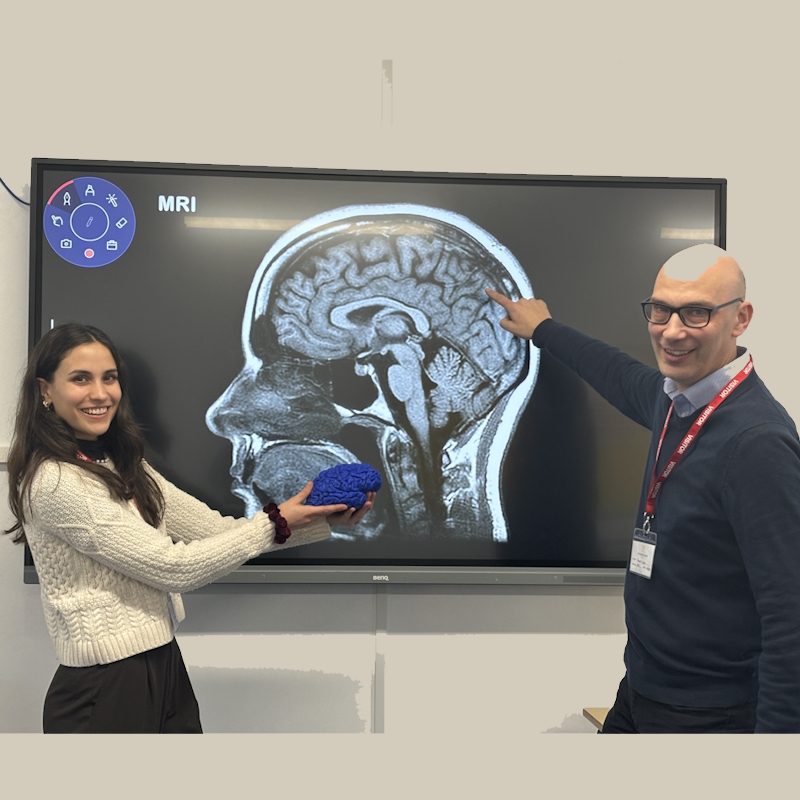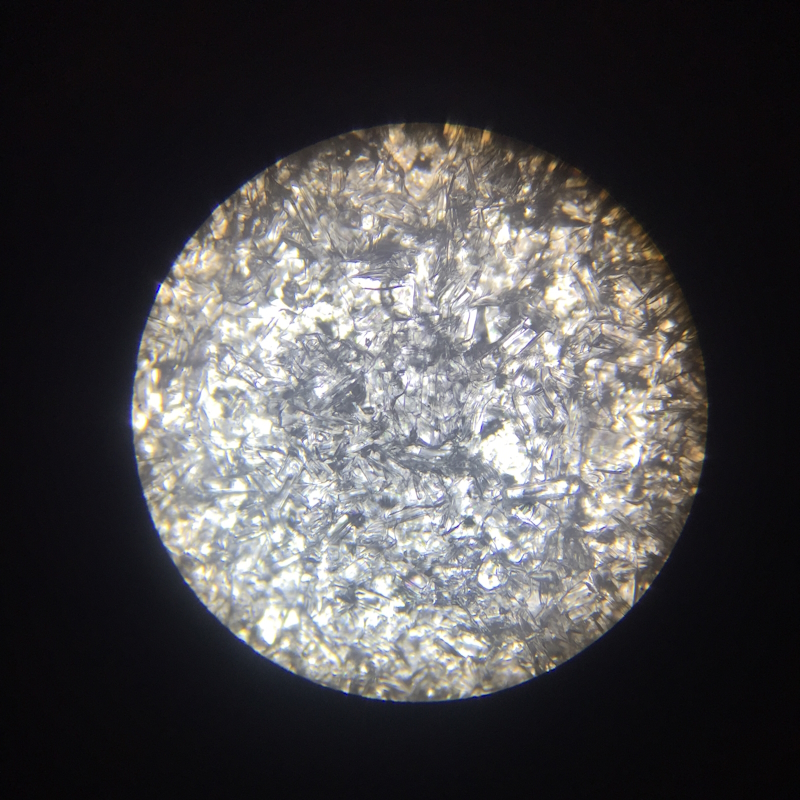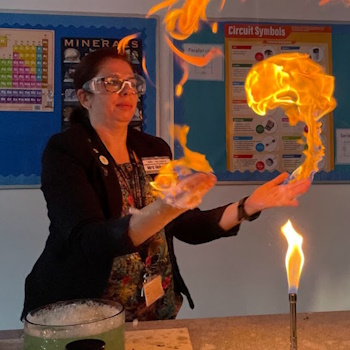Sam Holyman , a Chemistry teacher from Aylesford School in Warwick, shares her experience so far of receiving a Partnership Grant and the impact it has had on the teaching of physics within the school.

"Professor Clare and his team from Oxford University has been integral to our project with in-person and remote sessions with our students."
Inspiration for our Grant work
I remember the first time that science really excited me; I was a year 7, first week of secondary school and Mrs Heathfield took my class into ‘the museum’. It was one of the little used dusty dark labs, where she had collected a number of bits and bobs that she thought would catch our interest and excitement – she was not wrong! It was the shiny liquid mercury that caught my eye, I’d seen nothing like it, and just like that, my passion for all things science was born. Fast forward over thirty years and I am now in the classroom myself and working with Professor Clare from Oxford University to bring research into the classroom and ignite young minds courtesy of the Royal Society Partnership Grant.
The Partnership Grants scheme funds schools and colleges up to £3,000 to work in partnership with STEM professionals from academia or industry to run an investigative STEM project. Inspired by my love for mercury, we decided to investigate whether one type of thermometer could be used in all situations to monitor temperature.
Our project focuses on mercury thermometers and how they have been used in clinical settings, surveys of the environment as well as in scientific studies as the standard for many years. Mercury thermometers have been used because they have a large range of temperature (−37 to 356 °C) and a high coefficient of expansion which means that even a small rise in temperature can be detected in the capillary of the calibrated part of the thermometer.
But mercury thermometers are being replaced because new machines and storage in hospitals operate at lower temperatures than these can measure, coupled with regulation change in 2012. There is a need to find reliable, precise, accurate and wide range instruments to measure temperature. This project aims to evaluate the use of thermometers by completing standard science practicals with different ranges, different expansion materials, thermocouple, temperature probes, data loggers and IR cameras to determine how they compare to a Hg expansion thermometer.
Our project is operating across the secondary phase with a dedicated group of STEM Clubbers who are core to our project. These students have completed required practicals which focus on temperature and then we have been led by their curiosity, investigating other experiments which require the use of temperature monitoring.
The impact of the grant so far
Science budgets are always stretched, and we find getting class sets of microscopes or immersion heaters are beyond our annual budget. So, the Royal Society grant has been a life-line as we carefully choose experiments which would allow us to not only undertake meaningful and engaging investigative project, but also procure class sets of modern equipment to replace the existing partial class sets. This equipment then can be used in the usual teaching and learning of the school, improving engagement and practical skills as students can have first-hand practical experience rather than watching a video or a demonstration.

"Royal Society provide lab books to keep notes and records of our investigations. These attractive lab books contain images from the Royal Society archive."
We have been given the opportunities to meet researchers at the start of their careers as they are still studying as well as established scientists with virtual and in-person visits. This meets some of the Gatsby Benchmarks as it gives our students the idea of what an academic career could look like and the opportunities that it gives.
Seeing the real MRI machine and what it can do, along with the imaging equipment that we have at school has helped to generate awe and wonder and, in turn, increased engagement in STEM at our school.
Our project is well underway, and here are our top tips for other teachers who are soon to embark on their own grant, or are thinking of applying:Top Tip: Take photos of your sessions and make sure you promote the fabulous work on your school socials.
This creates increase buy-in from parents and carers as they see the science capital opportunities for their children. Social media posts can also be used as evidence for employers of STEM Ambassadors and for school staff appraisals.

"Royal Society provide a film grant which allowed us to purchase a specialised camera to take images of salol crystalising at different temperatures."
![]() Top Tip: Evaluate the equipment needs of your school and build this into your grant application. That way you will have a legacy which lasts.
Top Tip: Evaluate the equipment needs of your school and build this into your grant application. That way you will have a legacy which lasts.
This fabulous opportunity has given us equipment that we can use for years to come. Training on the new kit has brought new skills for teaching staff who can embed it into their practice as well as links to outside agencies who can come into school or offer work experience placements and be a critical friend.
![]() Top tip: Ensure your STEM partner is fully involved throughout the grant project work.
Top tip: Ensure your STEM partner is fully involved throughout the grant project work.
Prof Clare has a passion for education and public engagement. He works at the cutting edge of research and can bring this to life as well as choosing his language and presentation carefully so that it can be accessed and understood by all ages. Prof Clare kindly came into school to launch our project, meeting all Year 7 in assembly and taking five classes all in one day! The buzz was fantastic. He has then led a STEM Club in person as well as via a video link showing his workplace and the MRI machine. We also took the post-16 science students to see the MRI machine during the summer. We have not yet completed our project so more engagement will be undertaken before the end.
Top Tip: If you want to apply for up to £3,000 Partnership grant and £1,000 film grant from The Royal Society, go to: www.royalsociety.org/partnership
The Royal Society has helped us every step of the way, including kindly giving us a film grant which has allowed us to purchase camera equipment to help us record the fabulous learning opportunities that we have been part of.
We hope that opportunities to collaborate with ‘real’ scientists open young people’s horizons to the option of a career as scientists, teachers, doctors . . . . STEMists!

